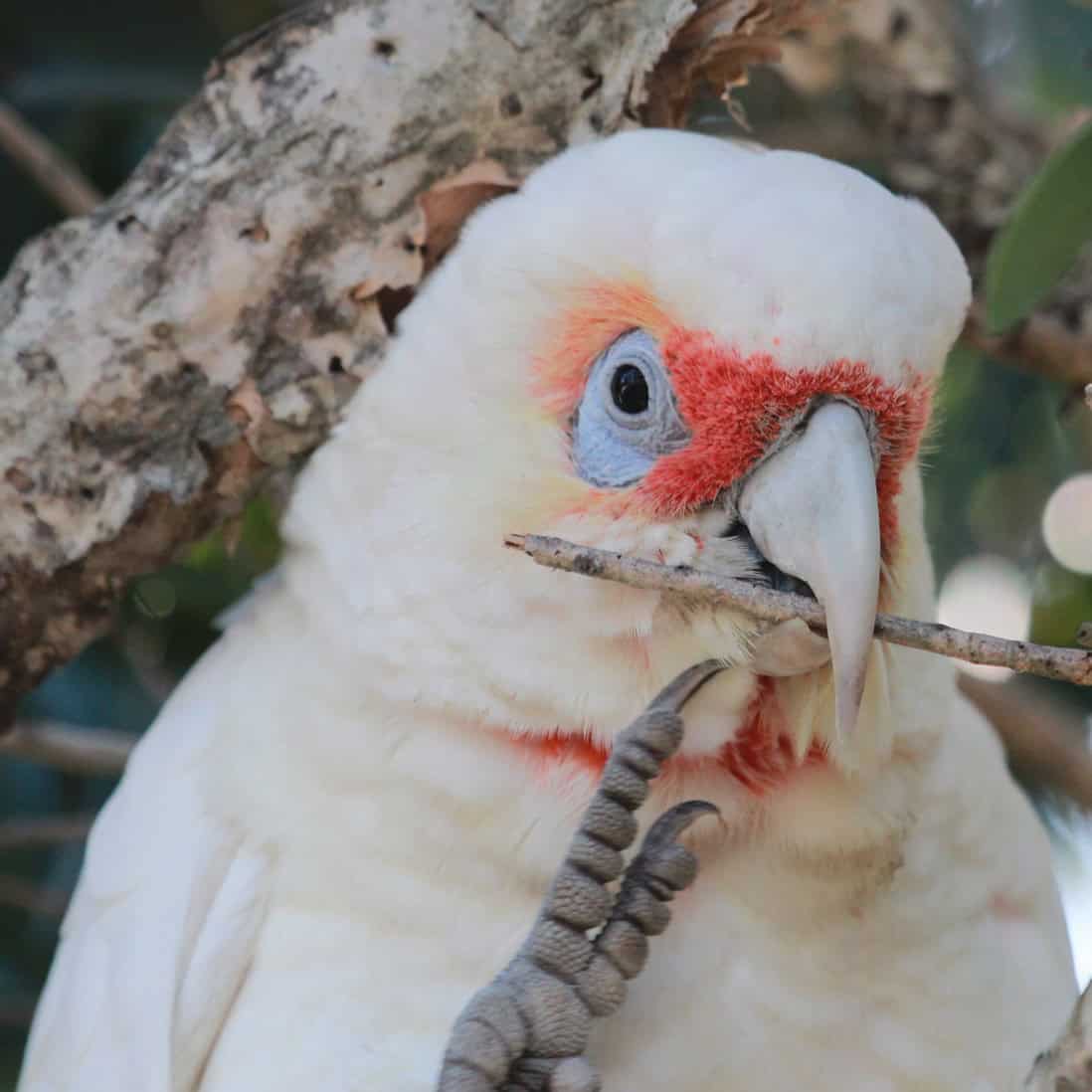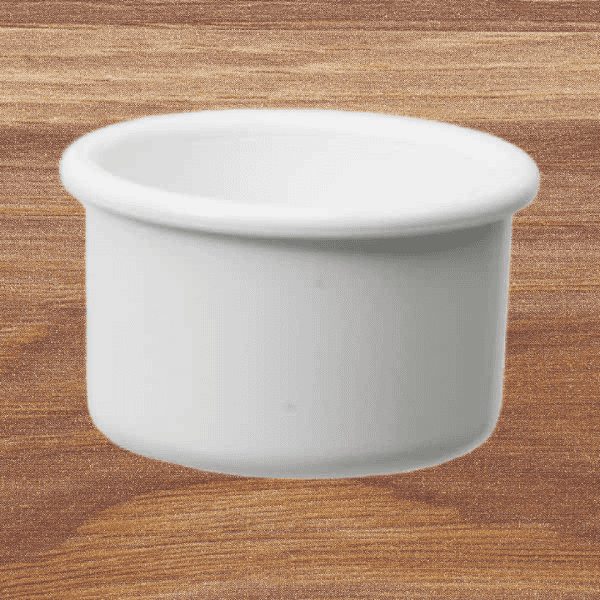Last Updated on by Mitch Rezman
Parrot Foraging and Enrichment
Parrots are fascinating creatures known for their intelligence, vibrant plumage, and playful demeanor.
However, beyond their beauty lies a complex set of needs, one of the most crucial being foraging and enrichment.
What does this mean?
For 100 million years (give or take), parrots, as we know them today, and currently in the wild search for food 60% of the time and try not to be food 40% of the time.
Parrots search for food by flying from area to area and simply putting their beak down to the ground or tree branch tapping and scraping, and seeking morsels getting them through another part of the day.
In this guide, we’ll explore the significance of foraging and enrichment activities for parrots, how to incorporate them into your feathered friend’s life, and the myriad benefits they offer.
Introduction to Parrot Foraging and Enrichment
Parrot foraging and enrichment involve providing opportunities for birds to engage in natural behaviors such as searching for food, solving puzzles, and exploring their environment.
This is not just a form of entertainment; it’s essential for their overall well-being.
In the wild, parrots spend asignificant portion of their time foraging for food, and replicating this behavior in captivity is vital for their physical and mental health.
Understanding Parrot Behavior
Parrots are highly intelligent creatures with complex behavioral needs.
In the wild, they spend hours each day foraging for food, which serves both as a means of survival and mental stimulation.
When deprived of this opportunity in captivity, parrots can develop behavioral issues such as boredom, aggression, and self-destructive behavior.
It’s impossible to point a single finger at “bad behavior” like foraging and enrichment.
Lighting is another opportunity to help your bird succeed or fail.
Types of Foraging and Enrichment
There are various ways to provide foraging and enrichment opportunities for your parrot, both physically and mentally.
Physical foraging involves toys and devices that require manipulation to access food, while mental foraging focuses on problem-solving activities that challenge the bird’s cognitive abilities.
Benefits of Foraging and Enrichment
The benefits of foraging and enrichment for parrots are numerous.
Physically, it promotes exercise and prevents obesity, while mentally, it stimulates their brains and prevents boredom.
Emotionally, it satisfies their natural instincts and reduces stress.
Choosing the Right Foraging Toys
When selecting foraging toys for your parrot, safety should be your top priority. Choose toys made from bird-safe materials and avoid anything with small parts that could be swallowed.
Additionally, consider the size and complexity of the toy, ensuring it’s suitable for your bird’s species and skill level.
Creating DIY Foraging Toys
DIY foraging toys can be a fun and cost-effective way to enrich your parrot’s environment.
Common household items like cardboard tubes, paper cups, and untreated wood can be transformed into stimulating toys with a little creativity and effort.
Training Parrots for Foraging
Training your parrot to engage in foraging activities can be a rewarding experience for both you and your bird.
Using positive reinforcement techniques, such as offering treats or praise, can encourage them to explore new toys and behaviors.
Introducing Foraging and Enrichment Activities
When introducing foraging and enrichment activities to your parrot, take a gradual approach.
Start with simple toys and gradually increase the complexity as your bird becomes more proficient.
Monitor their progress closely and adjust accordingly.
Common Mistakes to Avoid
It is said, that when implementing foraging and enrichment activities, avoid overwhelming your parrot with overly complex toys.
The flip side is don’t underestimate the intelligence of your bird and don’t mistake lack of motivation for lack of interest, i.e. a bird with 4 overflowing food dishes in its birdcage is not motivated to “seek additional food.”
Additionally, be mindful of introducing new foods into their diet and monitor for any adverse reactions.
The flipside is by not introducing new foods, you’ll guarantee your bird never acepts new food.
FAQs About Parrot Foraging and Enrichment
- What are the signs that my parrot needs more enrichment?*
– Signs of boredom or frustration, such as excessive screaming or feather plucking, indicate a need for more enrichment activities.
- Can all parrot species benefit from foraging activities?
– Yes, foraging activities are beneficial for all parrot species, from small budgies to large macaws.
- How often should I change my parrot’s foraging toys?
– It’s a good idea to rotate your parrot’s toys regularly to prevent boredom.
Aim to introduce new toys every week or two.
Also, consider rearranging everything in your bird’s cage on a regular basis to keep your FID from getting complacent.
- **Are there any foods I should avoid using in foraging toys?**
– Avoid foods that are high in fat, salt, or sugar, as well as anything toxic to birds, such as avocado or chocolate.
- **My parrot seems uninterested in foraging, what should I do?**
– Be patient and try experimenting with different types of toys and treats until you find something that piques their interest.
Conclusion
In conclusion, parrot foraging and enrichment are essential aspects of caring for these intelligent and social creatures.
By providing opportunities for physical and mental stimulation, we can enhance their quality of life and strengthen the bond between humans and birds.
Written by Mitch Rezman and the Windy City Parrot Content Team
Author Profile
Latest entries
 The Traveling BirdJune 26, 2025Can You Name 5 Parrot Species That Are Living Wild in the USA?
The Traveling BirdJune 26, 2025Can You Name 5 Parrot Species That Are Living Wild in the USA? Bird BehaviorJune 26, 2025How is it Parrots Are Problem Solvers Social Animals and Even Use Tools?
Bird BehaviorJune 26, 2025How is it Parrots Are Problem Solvers Social Animals and Even Use Tools? Bird & Parrot AnatomyJune 25, 2025How a Tiny Chemical Modification Makes Parrots Nature’s Living Paintings
Bird & Parrot AnatomyJune 25, 2025How a Tiny Chemical Modification Makes Parrots Nature’s Living Paintings PigeonsJune 20, 2025How Do Parrots Thrive in Cities Outside Their Native Habitats?
PigeonsJune 20, 2025How Do Parrots Thrive in Cities Outside Their Native Habitats?




